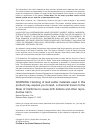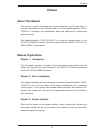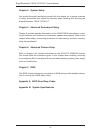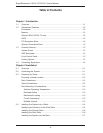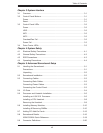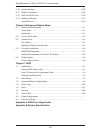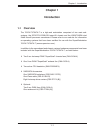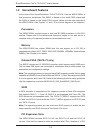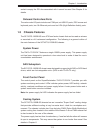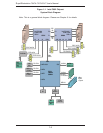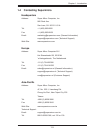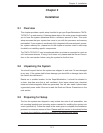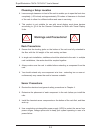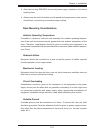
SuperWorkstation 7047A-73/7047A-T User's Manual
1-2
1-2 Serverboard Features
At the heart of the SuperWorkstation 7047A-73/7047A-T lies the X9DA7/X9DAi, a
dual processor serverboard The X9DA7 is based on the Intel® C602 chipset and
the X9DAi is based on the Intel® C602 chipset. Below are the main features of
the X9DA7/X9DAi. (See Figures 1-1 and 1-2 for a block diagram of the chipsets.)
Processors
The X9DA7/X9DAi supports single or dual Intel E5-2600 processors in LGA 2011
sockets. Please refer to the serverboard description pages on our web site for a
complete listing of supported processors (www.supermicro.com).
Memory
The X9DA7/X9DAi has sixteen DIMM slots that can support up to 512 GB of
registered/unbuffered ECC DDR3-1600/1333/1066/800 LRDIMMs (load-reduced
DIMMs). See Chapter 5 for details.
Onboard SAS (7047A-73 only)
The X9DA7 includes an LSI 2308 SAS controller, which supports eight SAS2 ports.
The hot-swap SAS drives are connected to a backplane that provides power, bus
termination and confi guration settings.
Note: The operating system you use must have RAID support to enable the hot-swap
capability and RAID function of the SAS drives. RAID 0, 1, 5 and 10 are supported (RAID
5 is not supported with Linux OS). Refer to the following ftp site for setup guidelines
<ftp://ftp.supermicro.com/driver/SAS/LSI/LSI_SAS_EmbMRAID_SWUG.pdf>.
SATA
A SATA controller is integrated into the chipset to provide a Serial ATA subsystem
that supports RAID 0, 1, 5 and 10 (RAID 5 is not supported with Linux OS). The
SATA drives are hot-swappable units. The 7047A-73 (X9DA7) supports two SATA
3.0 and four SATA 2.0 ports while the 7047A-T (X9DAi) supports six SATA 3.0 and
four SATA 2.0 ports.
Note: The operating system you use must have RAID support to enable the hot-
swap capability and RAID function of the Serial ATA drives.
PCI Expansion Slots
The X9DA7/X9DAi has three PCI-E 3.0 x16, two PCI-E 3.0 x8 and one PCI-E 3.0
x4 slots. Note that the expansion slots are enabled with CPUs, therefore if a CPU



